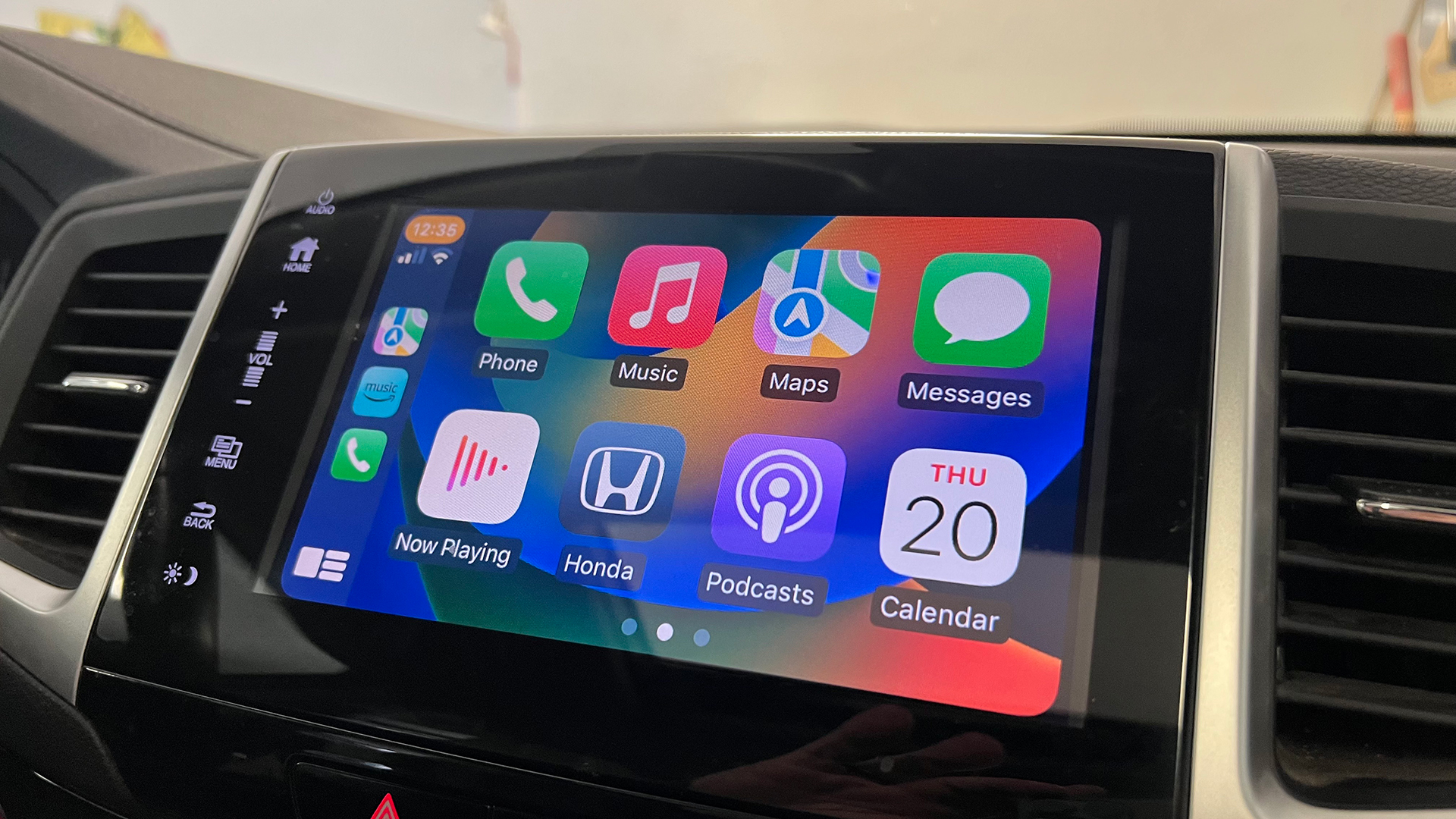

I follow a routine whenever I get into our family’s Honda Ridgeline or any other car I drive for work. After I slide into the driver’s seat, without fail, I plug my phone into the car’s USB outlet so I’m greeted with a screen I’m imminently familiar with: Apple’s CarPlay. It’s a perfect design, but I need every automaker to stop trying to force their laggy-ass native systems upon me and everyone else.
I’m sorry, but no one wants Stellantis’ uConnect, Ford’s Sync, Toyota’s Entune, Mercedes-Benz’s MBUX, or any other native system. In the immortal words of Regina George, “Stop trying to make them happen, it’s not going to happen.”
Apple’s phone mirroring system quickly became ubiquitous after its introduction in 2014, and automakers have offered the service on nearly every new car ever since. Now, 98% of all new cars support CarPlay or Android Auto. A few folks were wary at first—a further dangerous distraction put in front of the driver. But smartphones weren’t going anywhere, and people found that CarPlay was pretty damn handy and was actually less intrusive to driving than most manufacturer systems.



Why was that? Because the user experience (UX) is clean, concise, and has everything most folks use every day—specifically 3.1 hours each day, according to my iPhone’s screen time tracking. It was, and is, just their phone mirrored onto their car’s screen, making using it easier and more familiar than learning two wildly different systems.
With these phone-mirrored designs, you get access to everything your phone has, from Apple, Waze, or Google Maps for navigation, music from Spotify, Apple Music, or Amazon Music, podcasts, your phone’s actual use-case of calling people, text messaging, and lately for me, using onX’s Hunt app to locate some turkeys. And the same goes for my Android Auto users who’ve forsaken the light of Apple’s ecosystem. I won’t judge, but they also have everything they use on their phones when the mirroring begins.

And it’s an enjoyable experience because it is so familiar. I’m not alone in that belief either, as Consumer Reports surveyed its 73,000 members and found both CarPlay and Android Auto users were more satisfied with their infotainment experiences than those using the native UXs.
Those results aren’t surprising, either. Though auto manufacturers have dropped billions into development for their systems, the results are the same across the board: laggy, confusing, requiring far too much concentration to find anything you want, and, well, just not our phones. A common complaint for many is how native UX systems still feel three to four generations behind what’s mirrored through Apple and Android.
According to Apple, nearly 79% of potential new car buyers would only consider a purchase if the vehicle had a screen-mirroring system like CarPlay or Android Auto. That’s a staggering number, but one that I believe based on the anecdotal evidence I have talking to folks before they purchase a new car. The first question they always ask is, “Does it have CarPlay or Auto?”

It’s also a number that represents billions of dollars in potential automaker revenue. And yet, automakers are either signaling or actively saying they’re going to kill Apple or Android’s systems in their lineups. That they believe they can “wean” folks off those familiar UXs. And their systems are far superior to those made by Apple and Android. Those statements are hysterical, given each automaker’s UX track record and current systems.
It is understandable, however, why automakers want to push their native infotainment systems. It’s cold, hard cash. These corporations understand that if you can keep people within a native system, the data given to them is valuable to advertisers and others. They collect and sell all of it at a high price, which helps their bottom line. It’s the same thing that Apple and Android do with your smartphones, and automakers want in on the gravy train.
But here’s the rub. There are currently 1.5 billion active iPhone users and a whopping 3.3 billion active Android users worldwide. And there are 120 million active iPhone users in the U.S., with Android making up the other half at around 133 million active users. All that these proclamations from automakers do is push those potential customers to the dealerships across the street that offer either CarPlay or Android Auto. And in an age where new cars are being bought far less frequently than in recent decades, why would you do anything that could potentially lower your revenue?
What’s more, you can see the animosity these decisions have fueled in comment sections, surveys, and forums across the internet. Everyone’s annoyed, and I don’t blame them. I would be, too, if Honda killed CarPlay in my Ridgeline.

I know that GM, the latest in a line of automakers to do away with CarPlay, isn’t going to backtrack—a risk it makes at its peril. As the company knows, infotainment is increasingly important to new car buyers. And CarPlay and Android Auto are integral parts of that. But when you don’t offer something that most buyers actually want, you lose them to other manufacturers.
People want CarPlay or Android Auto, not the manufacturer’s native system. It’s high time that automakers see that.
Got a tip or question for the author? Contact them directly: jonathon@thedrive.com